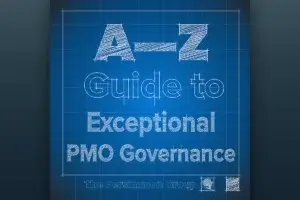This Project Charter template provides teams with a one-page document that captures the Why, What, Who, How, and When of a project.
What’s included in a Project Charter?
Project Description
- Describe the project’s purpose using the SMART (Specific, Measurable, Achievable, Realistic, and Timely) approach. This provides clarity to the expectations of What and When.
Desired End State or Outcomes
- Note “What success for this project looks like”—the end state it seeks. This provides the “Why” of the project—the overall intent its scope will pursue.
Project Need (Reasoning or Catalyst behind the project)
- Provide key reasons why the project is happening or seeking to achieve.
- These reasons are specific metrics that support the Outcomes and may be measured against to determine if the project was successful.
Project Dates
- Note the Original “Expected Start” date of the project, the “Actual Start” date, and the forecasted “Expected End” (project completion) date.
Project Budget
- Note the Total Approved Budget for the project.
Stakeholders
- List key people, business units or departments, and companies that are associated with the project.
Scope
- List the key features and/or functions of the project or product. This “What” the project is working towards—the final output against which it may be measured for completeness.
- Also, note items that are not included in the project scope or effort. This helps clarify what is not part of the project to the reader.
- What does “done” look like for this project? How do you know when the project is finished and you can transition to “steady state” operations?
Milestones
- List any key events and/or dates for the project.
- The “Baseline” date refers to the date committed to at the time of project approval—it is the date by which the project is measured against.
- The “Expected” date is the current, forecasted completion date.
- The “Completed” date is the actual date the milestone was completed.
- If the dates are dependent on other key events (e.g. project approval), then the dates may be noted as “+ x days” (e.g. + 4months) to demonstrate the duration once the prior event completes.
Dependencies, Assumptions, & Risks
- Note any key dependencies regarding Time, Resources (People, Cost, or Material), Hardware/Software, Communications, or Legal. A key dependency means your project is reliant on some external commitment, action, or decision.
- Assumptions: list any current, key assumptions the project has not validated.
- Risks: list any key risks that could affect the project’s scope, time, or cost.
Click here to preview and download the Project Charter Template.









